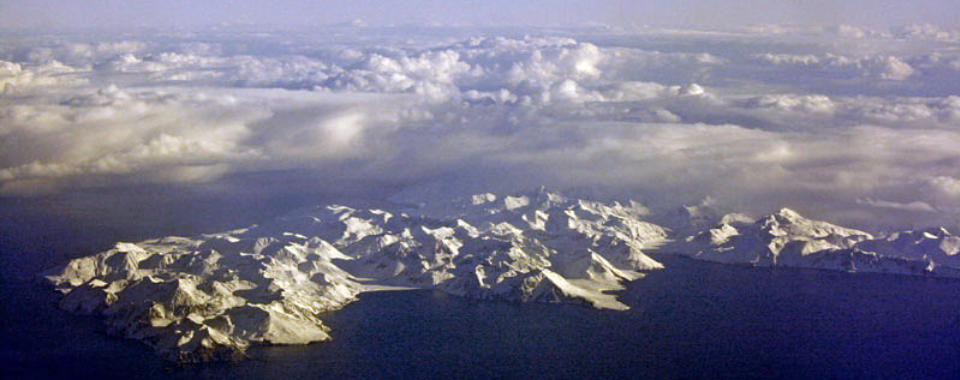
Photo By Kare Lohse
JOHN KELLER
“WWII Attu Scrapbook; 1943-1944”


I thought I should set the record straight. We had no causalities in our hospital proper. However, we lost five men
during the Jap counterattack. This was because only one of our platoons of a three platoon hospital was set up and
the remainder were pressed into service in the field . Many were required as litter bearers due to the fact that
some patients had to be carried a mile or so from the front over very rough terrain. There was no other means of
transportation. You can’t imagine what it is like to travel on melting tundra even without carrying an injured
soldier. I experienced this on the first day on Attu and then I was given a different job. I believe they were of afraid
of loosing one of their X Ray men from exhaustion. Our men were lost during the counterattack which Virgil
Montgomery talks about. See his story in the Infantry Journal on your site. Virgil was a member of our motor pool
and of course we had no need of it at this time.
Our hospital was set up about the 20 of May [1943], My pictures were common property of all personnel in our
unit. I have been trying to locate other members of our outfit, but have no luck so far. I was surprised about the
number who have passed on. Not many old people have computers. They don't know what they are missing. I was
surprised that I could get only four pictures to a disk . These, I consider of the most interest. Others that I have
were taken after the winter set in on Attu.
The following pictures were taken by a member of the 14th Field Hospital. I don't remember who took the
pictures. The negatives were passed among the members and nearly all of us had prints made, hence the many
scratches.
The 14th Field Hospital was landed at Massacre Bay on the evening of the 13th of May 1943. Due to the spring thaw
and rough terrain, it was impossible to set up our hospital in this area. Most personnel were put into service as
litter bearers. These were badly needed since the wounded had to be carried long distances over very rough
terrain to be evacuated on ships waiting in Massacre Bay.
After about a week of this service, it was decided that a unit of the hospital could be set up in Holtz Bay, which had
been recently cleared of the enemy and the terrain afforded a firmer foundation. Those selected to go and
necessary equipment was loaded on a Navy cruiser for transportation to Holtz Bay. My main remembrance of this
trip was that the sun was shining and we had a good view of the Attu shoreline. Also we were served the first good
meal since landing on Attu.
All of these pictures were taken around the Holtz Bay area. When we first landed, there was some cleaning to do,
but as I recall, we were ready for full hospital service in very short order which is what a field hospital is trained to
do.
John
eMail John Keller
[Notes: John was stationed in the Aleutians from 1942 to 1943, and worked the field hospital on Attu as an x-ray technician. John had taken
the x-rays of Joe Martinez in the 14th Field Hospital, located near Holtz Bay, before Joe died.]
![14th Field Hospital at Holtz Bay, Attu, AK. [John Keller]](index_htm_files/221423.jpg)
![14th Field Hospital at Holtz Bay, Attu, AK. [John Keller]](index_htm_files/234403.jpg)
![14th Field Hospital at Holtz Bay, Attu, AK. [John Keller]](index_htm_files/234404.jpg)
1. 14th Field Hospital at Holtz Bay, Attu, AK.
![Looking towards Holtz Bay from the 14th Field Hospital. Attu, AK. [John Keller]](index_htm_files/221424.jpg)
![Looking towards Holtz Bay from the 14th Field Hospital. Attu, AK. [John Keller]](index_htm_files/234405.jpg)
![Looking towards Holtz Bay from the 14th Field Hospital. Attu, AK. [John Keller]](index_htm_files/234406.jpg)
2. Looking towards Holtz Bay from the 14th Field Hospital. Attu, AK.
![Captured Japanese food and boots. [John Keller]](index_htm_files/221425.jpg)
![Captured Japanese food and boots. [John Keller]](index_htm_files/234407.jpg)
![Captured Japanese food and boots. [John Keller]](index_htm_files/234408.jpg)
3. Captured Japanese food and boots. During the battle for Attu, many GIs
went days with out any...or very little...food. The Japanese soldiers were
reduced to eating thistle. The man smoking a pipe in picture is Capt. Robert
Schock of the 14th.
![Japanese ammunition taken from caves. [John Keller]](index_htm_files/221426.jpg)
![Japanese ammunition taken from caves. [John Keller]](index_htm_files/234409.jpg)
![Japanese ammunition taken from caves. [John Keller]](index_htm_files/234410.jpg)
4. Japanese ammunition taken from caves.
5. Japanese soldiers killed in action.
6. Japanese soldiers killed in action.
7. The Attu Sun, dated 15 June 1943, Vol. 1. Note the warning not to send
copies of this publication home…it would NOT pass the censors! [When we
first published this image around 2006 we were concerned about file sizes
(this one was about 90KB) and the new PNG image formats recently
introduced, and whether or not all browsers could work with them. We
originally offered two versions of this image as a result, the 2nd being a GIF
image, with the first, this one, being a PNG format!]
![Japanese soldiers killed in action. [John Keller]](index_htm_files/221428.jpg)
![Japanese soldiers killed in action. [John Keller]](index_htm_files/234411.jpg)
![Japanese soldiers killed in action. [John Keller]](index_htm_files/234412.jpg)
![Japanese soldiers killed in action. [John Keller]](index_htm_files/221429.jpg)
![Japanese soldiers killed in action. [John Keller]](index_htm_files/234413.jpg)
![Japanese soldiers killed in action. [John Keller]](index_htm_files/234414.jpg)
![The Attu Sun, 15 Jun 1943. [John Keller]](index_htm_files/260011.png)
![The Attu Sun, 15 Jun 1943. [John Keller]](index_htm_files/260025.png)
![The Attu Sun, 15 Jun 1943. [John Keller]](index_htm_files/260026.png)
Originally Published < 2006


